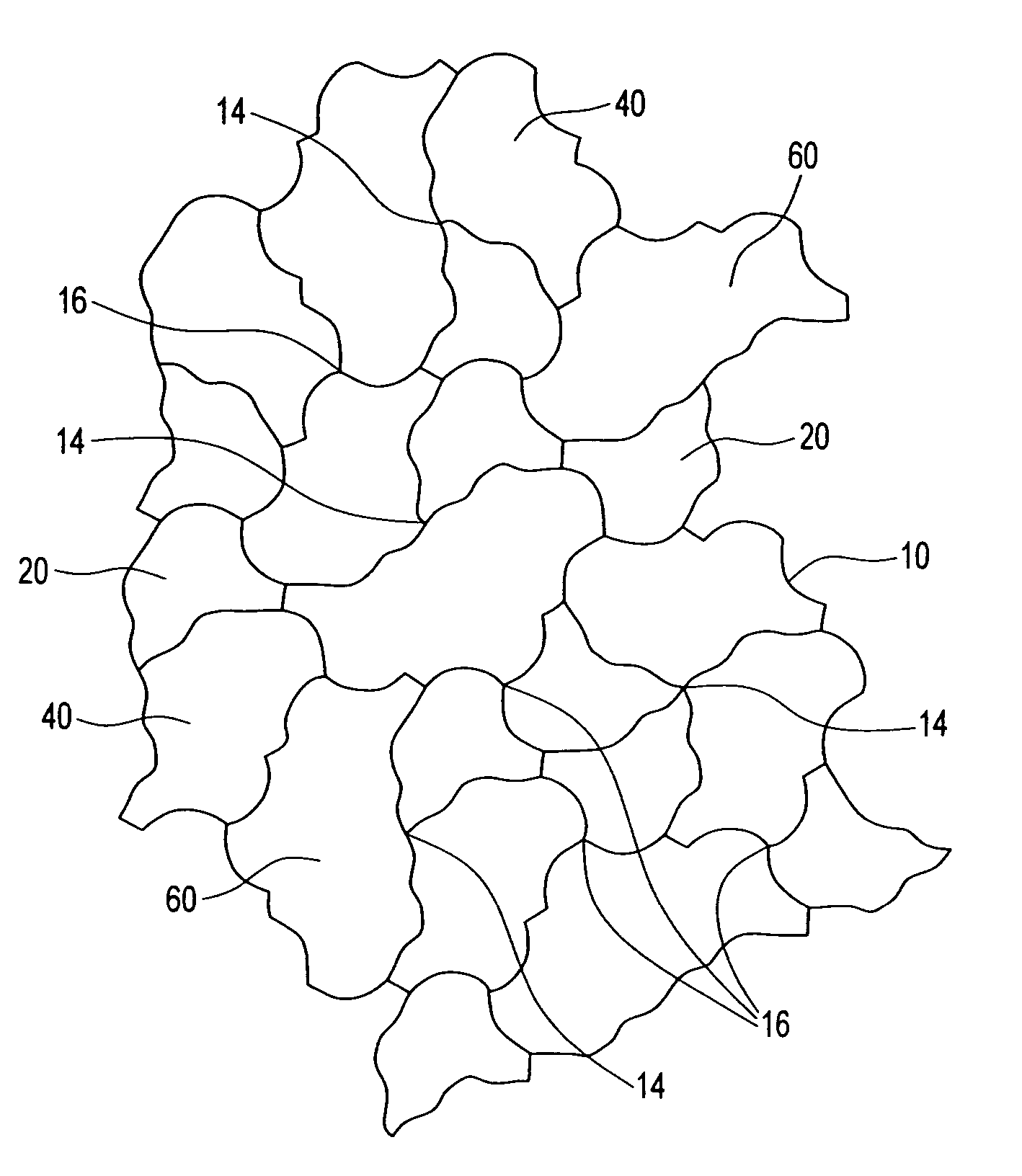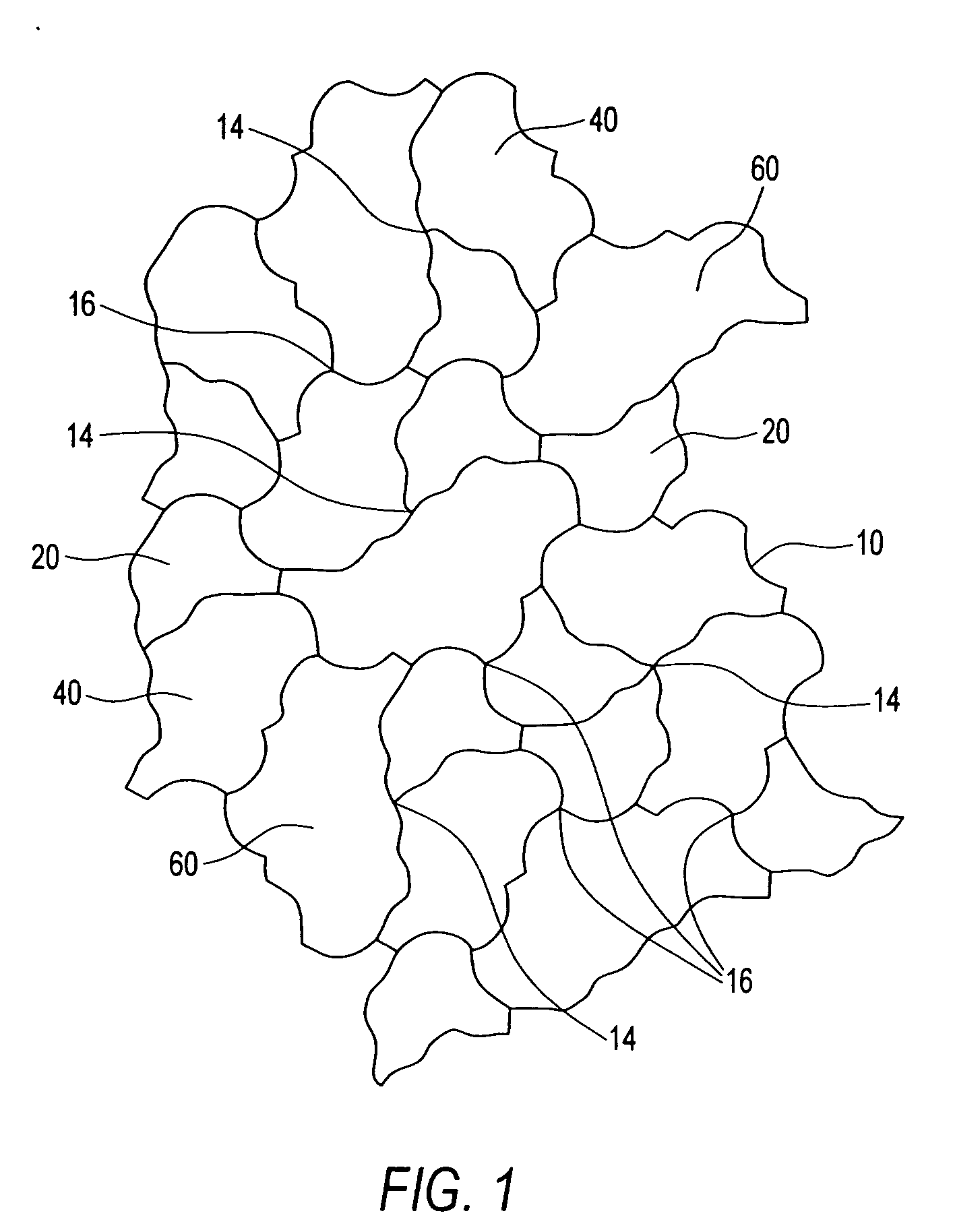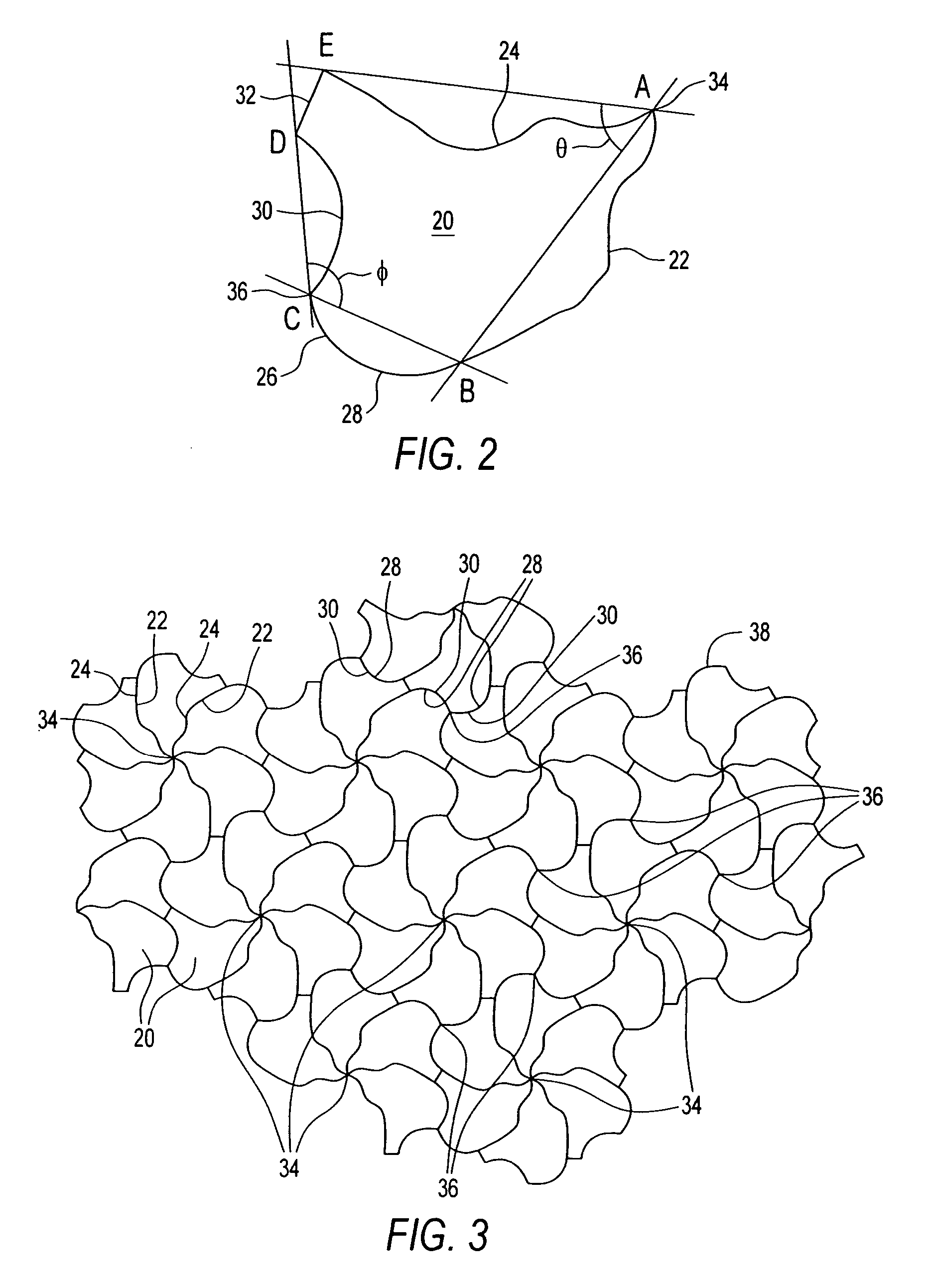Irregular, tessellated building units
a technology of tessellated building units and random patterns, applied in the direction of single unit paving, outline designs, paths, etc., can solve the problems of labor intensive, high cost, random patterns of manufactured units not having the degree of natural irregularity, etc., to enhance natural beauty, improve structural connection, and custom appearance
- Summary
- Abstract
- Description
- Claims
- Application Information
AI Technical Summary
Benefits of technology
Problems solved by technology
Method used
Image
Examples
first embodiment
[0081]FIG. 1 shows a surface covering 10 constructed in accordance with the present invention. Surface covering 10 comprises an arrangement of building units without substantial gaps or overlapping. Building units may be molded or otherwise made of concrete, stone, ceramics, plastic, natural or synthetic rubber, glass or other suitable material, or combinations thereof. In FIG. 1, surface covering 10 is comprised of three different sized units 20, 40 and 60. The units have what appear to be irregular configurations. Further, the surface covering 10 has the appearance of a natural, custom surface, i.e., there is no readily apparent repeating pattern.
[0082] An enlarged view of unit 20 is shown in FIG. 2. The unit comprises a single primary element 20 of a rotational tessellation as will be described in greater detail below. Primary element 20 has a first side 22 extending between points A and B. Second side 24 extends between points A and E. A transverse side 26 extends between points...
second embodiment
[0092]FIGS. 11-16 illustrate building units and an exemplary surface covering of a rotational tessellation element of the invention. FIG. 11 shows a primary element 120 comprised of six sides, namely, first side 122 extending between points A and B, second side 124 extending between points A and F, third side 128 extending between points B and C, fourth side 130 extending between points C and D, fifth side 131 extending between sides D and E and sixth side 133 extending between points E and F. Together, sides 3 to 6 form transverse side 126. Element 120 has three vertices, namely, first vertex 134, second vertex 136, and third vertex 137. First 122 and second 124 sides are irregular, rotational images of one another, radiate from first vertex 134, and are rotationally spaced by an angle θ of 60 degrees. The third 128 and fourth 130 sides are rotational images of one another, radiate from second vertex 136 and are rotationally spaced by an angle φ of 180 degrees. Fifth 131 and sixth ...
third embodiment
[0099]FIGS. 17-22 illustrate building units and an exemplary surface covering of the rotational tessellation element of the invention.
[0100]FIG. 17 illustrates a primary element 220 of the third embodiment. Primary element 220 has a first side 222 extending between points A and B, a second side 224 extending between points A and F. The second side 224 is a rotated image of first side 222 about first vertex 234. The angle θ of rotation is 90 degrees in the third embodiment. Basic element 220 further includes third side 228 extending between points B and C and fourth side 230 extending between points C and D. Fourth side 230 is a rotated image of third side 228 about second vertex 236. The angle of rotation between sides three and four is angle φ which in case of the third embodiment is 90°. Basic element 220 further comprises a fifth side 231 extending between points D and E, and a sixth side 233 extending between points E and F. Sixth side 233 is a rotated image of fifth side 231 ab...
PUM
 Login to View More
Login to View More Abstract
Description
Claims
Application Information
 Login to View More
Login to View More - R&D
- Intellectual Property
- Life Sciences
- Materials
- Tech Scout
- Unparalleled Data Quality
- Higher Quality Content
- 60% Fewer Hallucinations
Browse by: Latest US Patents, China's latest patents, Technical Efficacy Thesaurus, Application Domain, Technology Topic, Popular Technical Reports.
© 2025 PatSnap. All rights reserved.Legal|Privacy policy|Modern Slavery Act Transparency Statement|Sitemap|About US| Contact US: help@patsnap.com



